[WR]F.A.Q - Fishing Ice Off
Posted by Nick Teynor & Photos by Logan Griffith on Apr 18th 2025
Welcome to the first feature in what we're calling Western Rivers Frequent Angling Questions or [WR]F.A.Q's. These periodic features shoot to highlight and de-mystify some of our favorite angling opportunities each year across the local waters. Stay tuned for more and as always stop by or give us a call to talk more about anything fly-fishing!
What is “Ice-Off”, when is it, and why does it matter to fly anglers?
“Ice-Off” happens when the ice on ponds, lakes, and reservoirs starts to melt. Fish that have been under the ice for the past 4-6 months move to the shallower water along the ice ledges to find warmer water, and food. The warmer water stimulates minnows, aquatic insects (such as midges), freshwater shrimp (scuds), and the warmer water also stimulates the fishes metabolism, which makes them fish want to feed often resulting in some epic fishing. Hitting your favorite resevoir in the magic window can be tough as it may vary every year. Factors such as weather, night time lows, wind direction and elevation make each stillwater fishery a little different. We're often monitoring these factors online and making periodic scouting drives to these places to check conditions and make plans.
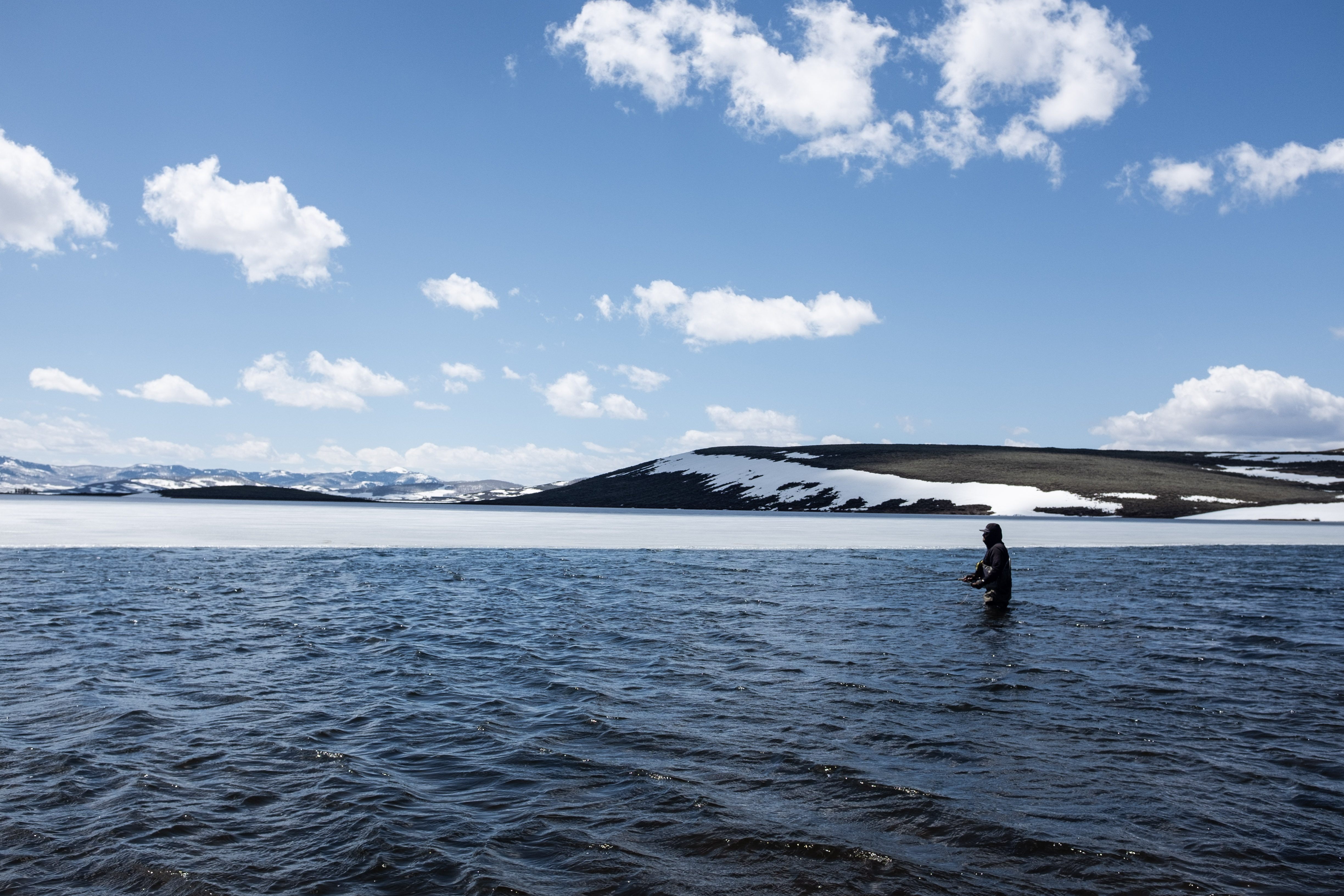

Do I need a float tube, pontoon, or boat to fish “Ice-Off”?
Short answer: No, you don’t need a boat to fish successfully, especially if the ice ledge is close to shore. As the ice recedes farther and farther off the shore (100+ feet), then a float tube or pontoon boat becomes a more viable option. Even then, however, it is not necessary to have a float tube or pontoon to find fish this early in the season. It is also potentially unsafe to fish in an inflatable boat during “Ice-Off” due to the wind pushing the ice around. If you are not careful, the wind can push the ice into you, and you run the risk of being stuck in the ice or having your float tube or pontoons being popped by sharp ice edges or debris. Despite where the ice may be, fish are often found cruising in shallow water, within feet of the shore.
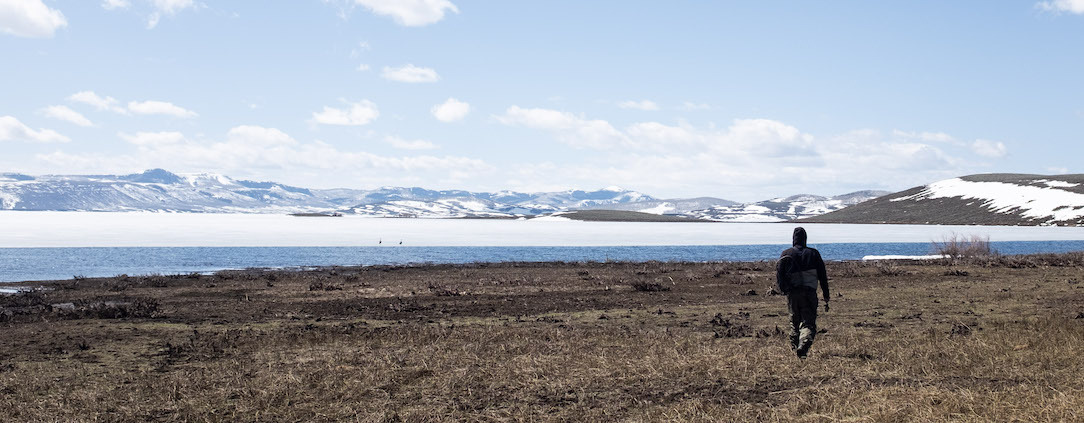
What Gear Do I Need to Fish “Ice-Off” on Local Stillwaters?
The fly rod and fly lines you need will depend on the size of the flies you’re fishing, the techniques you use, and the size of the fish you’re going after. If you want to keep it simple, a standard 9’ 5 weight fly rod, a floating line, 7.5’ 0X-3X leaders and tippet, and a variety of standard attractor flies (i.e., Wooly Buggers, Zebra Midges & Chironomids, Leeches, etc.) will work for many of our local ponds, lakes, and reservoirs during “Ice-Off”. Many of us in the shop, however, swear by 6 weight fly rods for most of our Stillwater fishing needs. A 6 weight rod can cast larger flies more efficiently, deal with windy conditions better, and handle the larger fish you may come in contact with. Rods in 9' or 9'6" lengths will give you the reach you want to have out there, especially if you're sitting in a tube or boat. Some of our favorite 6 weights for Stillwater fishing are the Sage R8 Core 696-4, the Winston Air 2 906-4, Scott Centric 906/4, and Orvis Helios D 906-4. If you feel like you need to get your flies down a little deeper, fishing RIO Versileaders off a floating fly line like a RIO Elite Predator, RIO Elite Gold MAX, Scientific Anglers Amplitude Textured Infinity or Scientific Anglers Amplitude Textured MPX, is more than sufficient. The fish are in shallower water, so there is rarely need to fish heavy, fast sinking flies or fly lines.

Where Should I Fish?
Most anglers like to fish “Ice-Off” where there is a 30’-50’ gap between the shore and the ice ledges. Fish will cruise just under the ice, especially on sunnier days, so casting your flies next to, or on the ice and then pulling them off into the water, and then retrieving your fly back, can be very productive. Another thing to keep in mind is that steeper banks going into the water, usually mean deeper water right off the bank. During “Ice-Off’, fish will cruise closer to the steeper banks, which makes these areas better for fly anglers. The fish are a usually a little more concentrated, and you will not need to make very long fly casts to find fish.

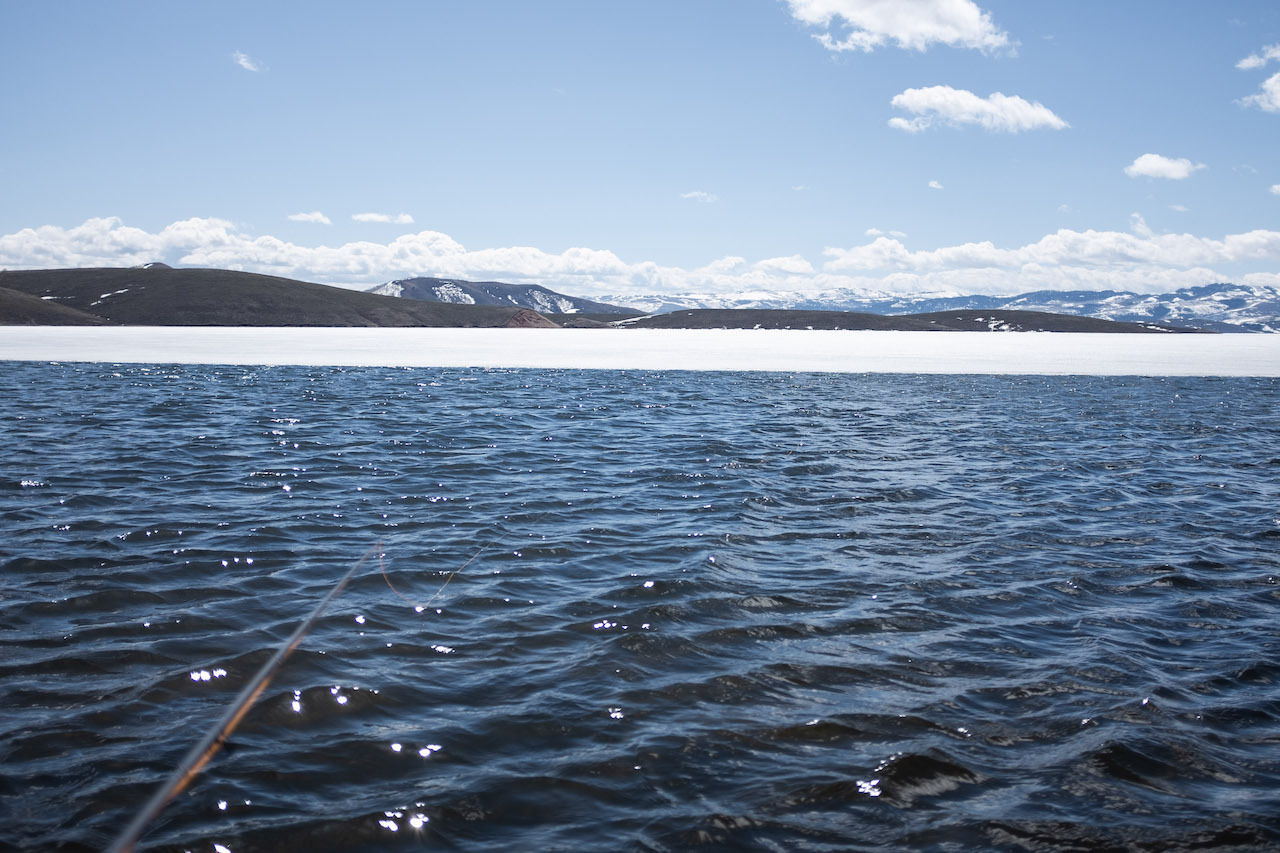
How Should I fish “Ice-Off”?
Totally up to you, and how you like to fish! If you like to fish balanced leeches and midges (i.e. Chironomids) under a bobber, that can work well-especially if nothing else seems to be working. If you prefer to strip streamers, leeches and nymphs, or dry-dropper rigs-that can work too. One thing to keep in mind is that water will be cold, which means the fish will be a little lethargic. Try different speeds of retrieving your flies, but I’d recommend airing on the slower side of things until water temps get to be above 50 degrees. Once you find a retrieve or technique that works, stick with it until it doesn’t. Another thing to keep in mind, especially on larger lakes and reservoirs, is to cover water. Don’t stand in one spot for hours on end, especially if you aren’t finding any fish!
What are good flies for "Ice-Off"?
Balanced leeches, chironomids and the streamers du jour are the most popular fly choices for Ice Off. Some of our favorite flies are the following:
- Goldie (pictured below), Rusty Trombone, Geisha Articulated Streamer #4
- White/Grey, Yellow, Rusty, Olive/Black Platte River Spider #4
- Sheila Sculpin #4
- Wounded Scuplin #8
- Black/Olive, Olive BH Minnie Leech #8
- Natural, Black Hot Head Leech #10
- Olive, Black, White Sculpzilla #8
- White, Black, Olive, Root Beer Wooly Buggers #6-#10
- White, Yellow, Orange, Grey, Olive, Black, Purple Micro Dungeons #10
- Black, Purple, Olive, Red Balanced Leeches #8-#10
- Blood (Red), Zebra Jumbo Juju Chironomid #12-#16
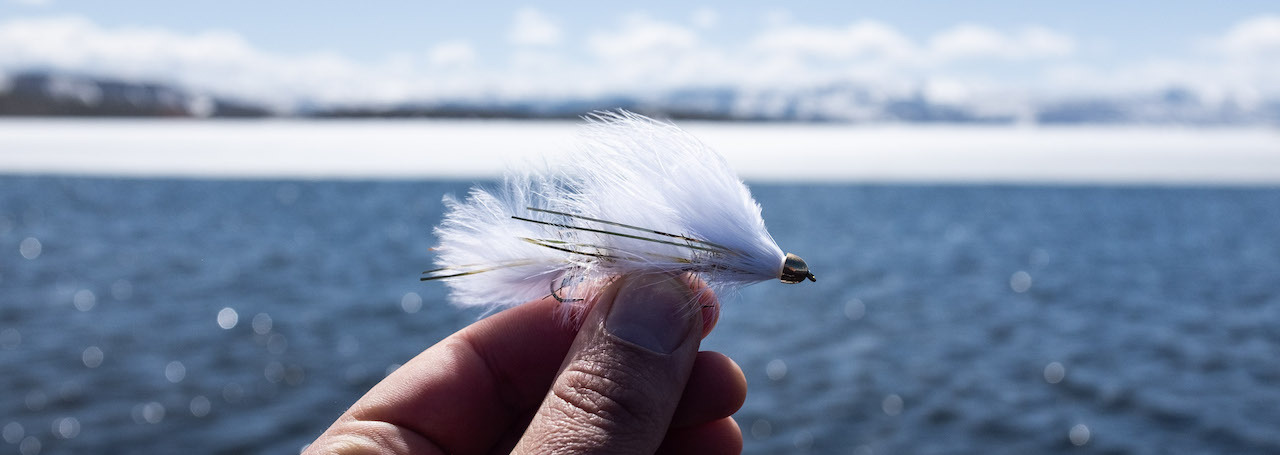
If I miss “Ice-Off”, is it still worth fishing ponds, lakes, and reservoirs in the Spring?
Yes! Once things begin to recede, they can move very quickly but don't sweat it; just because the ice is gone, doesn’t mean fish stop feeding! Until the heat of the Summer drives the fish to deeper water, fish in Stillwater will cruise the shallower water throughout the day because that is where much of the food is. Fish will hangout longer in the shallower water during low periods of light (Dawn, Dusk, Cloudy Days), and will head deeper during the brightest parts of the day.
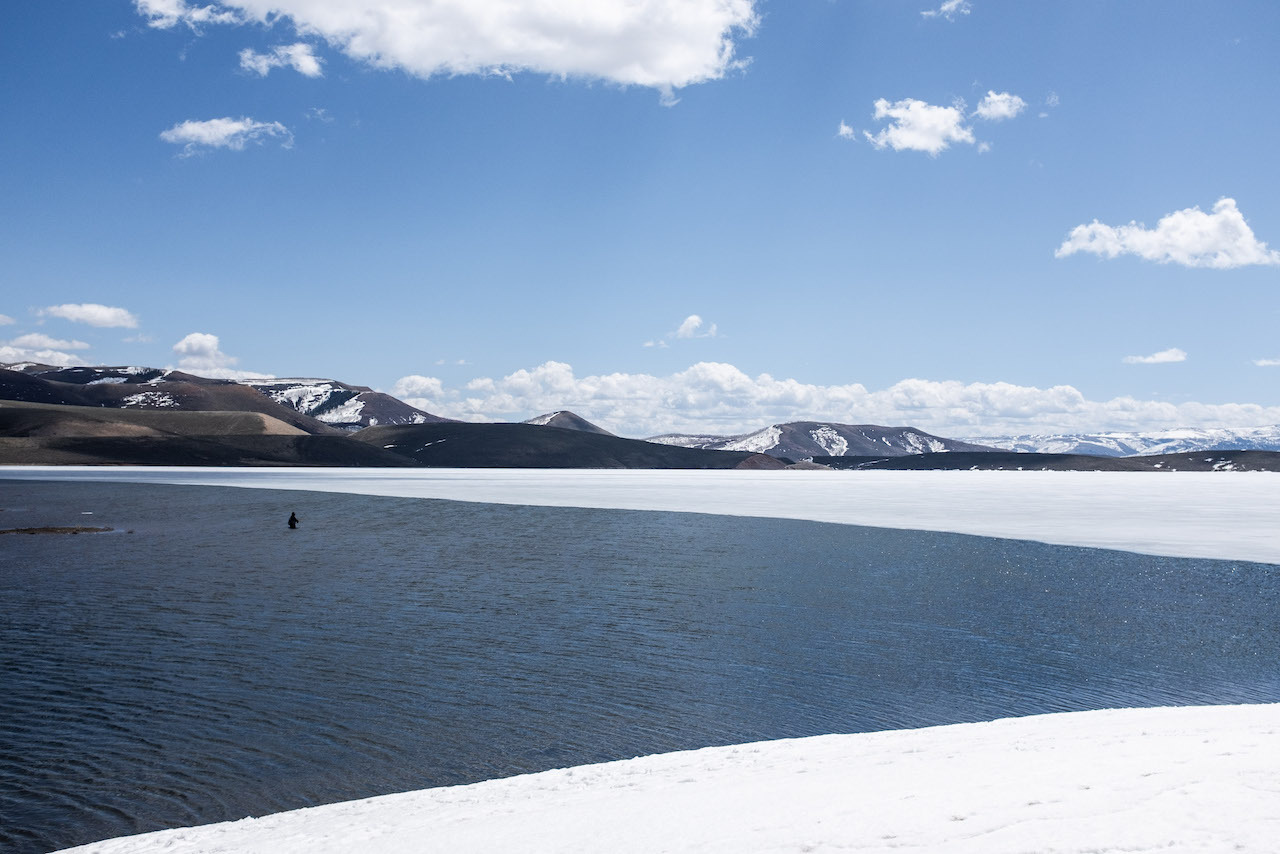

![[WR]F.A.Q - Fishing Ice Off [WR]F.A.Q - Fishing Ice Off](https://cdn11.bigcommerce.com/s-8uk8w4kj9b/images/stencil/460x250/uploaded_images/screen-shot-2025-05-20-at-5.21.40-pm.png?t=1747783367)
